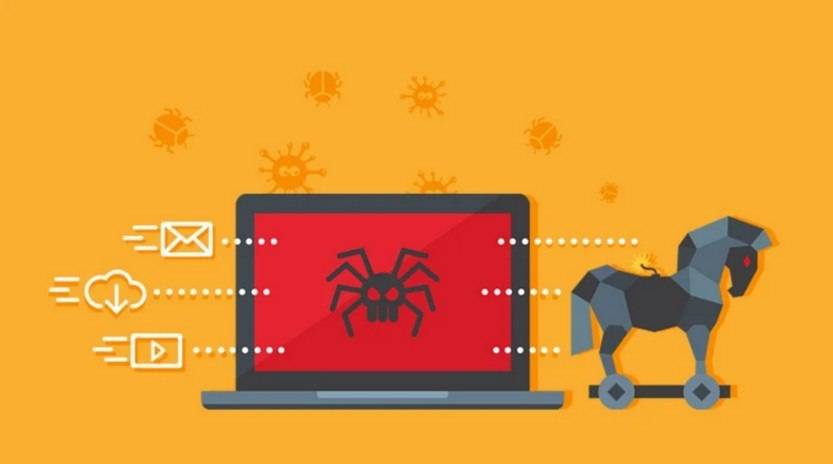Scams and phishing attempts have become increasingly prevalent in the digital age, targeting unsuspecting individuals and organizations. One such scam that has recently emerged is the Royal Bank of Canada (RBC) ‘User Roles Have Been Updated’ phishing scam. This article aims to provide a comprehensive overview of this scam, including what it is, how it works, what to do if you have fallen victim, technical details, and relevant statistics.

What is the Royal Bank of Canada ‘User Roles Have Been Updated’ Phishing Scam?
The Royal Bank of Canada ‘User Roles Have Been Updated’ phishing scam is an attempt by cybercriminals to deceive RBC customers into revealing their personal and financial information. The scam typically involves sending fraudulent emails or text messages that appear to be from RBC, informing recipients that their user roles have been updated and prompting them to click on a link to verify their account details.
These phishing messages are designed to mimic the official RBC communication, including the bank’s logo, branding, and email format, making it difficult for recipients to distinguish between genuine and fraudulent messages. The goal of the scammers is to trick individuals into providing their login credentials, credit card information, or other sensitive data, which can then be used for identity theft or financial fraud.
How Does the Scam Work?
The Royal Bank of Canada ‘User Roles Have Been Updated’ phishing scam typically follows a well-defined process:
- The scammer sends out a large number of phishing emails or text messages, targeting RBC customers.
- The messages appear to be from RBC, using the bank’s logo, branding, and email format to appear legitimate.
- The email or text message informs the recipient that their user roles have been updated and provides a link to verify their account details.
- When the recipient clicks on the link, they are directed to a fake RBC website that closely resembles the genuine RBC online banking portal.
- The fake website prompts the user to enter their login credentials, credit card information, or other sensitive data.
- Once the user submits their information, the scammers gain access to their personal and financial details, which can be used for fraudulent activities.
It is important to note that RBC will never send unsolicited emails or text messages asking for personal or financial information. Therefore, any communication claiming to be from RBC that requests such information should be treated with suspicion.
What to Do If You Have Fallen Victim?
If you have fallen victim to the Royal Bank of Canada ‘User Roles Have Been Updated’ phishing scam, it is crucial to take immediate action to minimize the potential damage:
- Contact RBC: Inform the bank about the scam and provide them with all relevant details. This will help them investigate the incident and take appropriate measures to protect your account.
- Change Your Password: If you have provided your login credentials, change your RBC online banking password immediately. Choose a strong, unique password that is not easily guessable.
- Monitor Your Accounts: Regularly monitor your bank accounts, credit cards, and other financial accounts for any suspicious activity. Report any unauthorized transactions to your bank or credit card issuer.
- Scan for Malware: Run a scan with Malwarebytes Free or other reputable antivirus software to ensure that your device is not infected with malware.
- Enable Two-Factor Authentication: Enable two-factor authentication for your RBC online banking account, if available. This adds an extra layer of security by requiring a verification code in addition to your password.
Technical Details of the Scam
The Royal Bank of Canada ‘User Roles Have Been Updated’ phishing scam utilizes various techniques to deceive recipients and make the scam appear legitimate:
- Spoofed Emails: The scammers send emails that appear to be from RBC, using the bank’s logo, branding, and email format. They may also use email addresses that closely resemble the official RBC domain.
- Phishing Websites: The scammers create fake RBC websites that closely mimic the genuine RBC online banking portal. These websites are designed to trick users into entering their login credentials and other sensitive information.
- Social Engineering: The phishing messages often employ social engineering tactics to create a sense of urgency or fear, prompting recipients to take immediate action without thoroughly verifying the authenticity of the communication.
Statistics on Phishing Scams
Phishing scams, including the Royal Bank of Canada ‘User Roles Have Been Updated’ phishing scam, continue to be a significant threat in the digital landscape. Here are some statistics that highlight the prevalence and impact of phishing:
- According to the Anti-Phishing Working Group (APWG), there were over 222,000 unique phishing attacks reported in the first quarter of 2021 alone.
- Phishing attacks cost businesses an estimated $1.8 billion in losses in 2020, according to the FBI’s Internet Crime Complaint Center (IC3).
- Approximately 1 in every 3,000 emails is a phishing attempt, according to a report by Symantec.
- Phishing attacks targeting financial institutions, like the Royal Bank of Canada, accounted for 25% of all phishing attacks in 2020, as reported by the APWG.
Summary
The Royal Bank of Canada ‘User Roles Have Been Updated’ phishing scam is a deceptive attempt by cybercriminals to trick RBC customers into revealing their personal and financial information. This scam involves sending fraudulent emails or text messages that appear to be from RBC, prompting recipients to click on a link and provide their account details. If you have fallen victim to this scam, it is crucial to contact RBC, change your password, monitor your accounts, scan for malware, and enable two-factor authentication. Phishing scams, including this one, continue to pose a significant threat, and it is essential to remain vigilant and cautious when dealing with unsolicited communications.










